Post Nine - Paris to Champagne
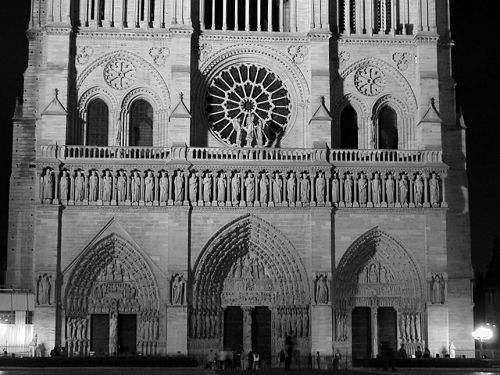 Notre Dame Notre DameI got this shot of the Notre Dame cathedral while wandering around one night. It was unseasonably cold and it had been raining earlier that day. As I walked the streets I thought of all the artists, writers, politicians and countless others who inhabited this city through the ages. Paris can be quite inspiring on a cool summer night. -- Scott |
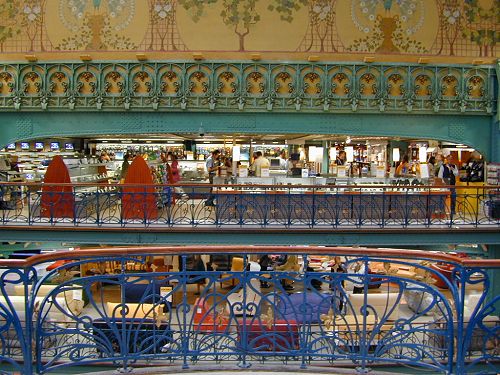 La Samaritaine La SamaritaineThis famous Paris department store is one of Paris's better examples of the Art Deco style. I like to see beautiful buildings like this in use. This photo does an excellent job of showing how the architectural style of 100 years ago still manages to have function today. -- Karen |
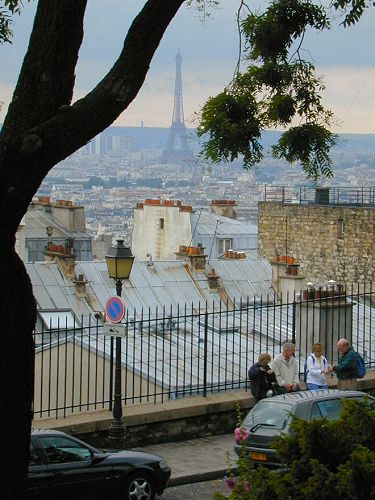 Paris Neighborhoods Paris NeighborhoodsParis is filled with many different interesting neighborhoods. Each section of the city feels unique and you can tell a lot about a person by what district or arrondissement they live in. We were staying in the Marias, which is in the 2nd district. This is the former Jewish quarter and is now filled with boutiques, specialty food stores, good restaurants, and funky bars. This photo was taken in Montmartre where Van Gogh and Toulouse-Lautrec used to hang out. -- Scott |
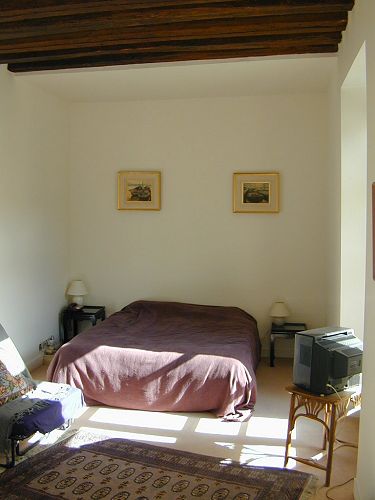 Our Apartment in the Marais Our Apartment in the MaraisYou're looking at approximately half of our rented studio. Off of this room we had a fully equipped kitchen, a half bathroom, and lots of closet space. It was a real luxury to settle in, hang our clothes in a closet (ANY closet!), stock the fridge, and cook our own meals. Of course, we also ate out. We had our best meal in Paris just a few blocks from our place at Chez Janou, a cozy bistro where tables for two almost touched. I had a tender, sweet artichoke daubed in mustard vinaigrette, followed by a rich, fatty rib-eye cooked medium. Scott had magret du canard au romarin. We drank Chateau-Neuf-de-Pape. An added little thrill came with the company: Geddy Lee (Rush lead singer, for the uninitiated) was having dinner with his wife and kids at the other end of the small dining room. We indulged in a quick, furiously whispered, adolescent exchange: "Yep, the glasses. And the profile!" "Are you sure it's him?" "I'm positive, honey." Then we sat back, congratulated ourselves on our star-spotting skills, and silently toasted him. -- Karen |
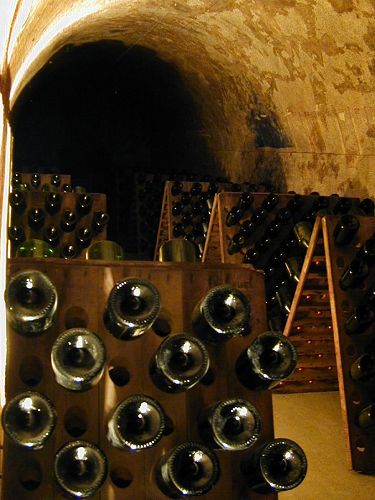 Here's a Little Riddle for You Here's a Little Riddle for YouOn tours in Champagne we toured vast underground cellars, tasted yummy bubbly, and heard plenty of champagne lore. For example, Dom Perignon was the first lucky guy to make champagne way back in the 1700s, and Madame Clicquot revolutionized champagne by inventing riddling. Riddling is the process by which sediment is concentrated at the top of champagne bottles so that it can be removed, clarifying the champagne. Originally, bottles were stuck into holes in boards, and progressively hand-turned and tilted at a sharper angle upwards until the sediment had scooched its way down into the neck of the bottle. The chunk of sediment was removed, a little more sweet wine was added to top off the bottle and begin the process of carbonation, and the bottle was recorked. Madame Clicquot is said to have invented this technique, crafting the first riddling board out of a sturdy kitchen table. Today, most riddlers are out of a job, because monstrous machines turn hundeds of bottles at once. At Veuve Clicquot, La Grande Dame, the premier label (upwards of $100 per bottle) is still hand-riddled. -- Karen |
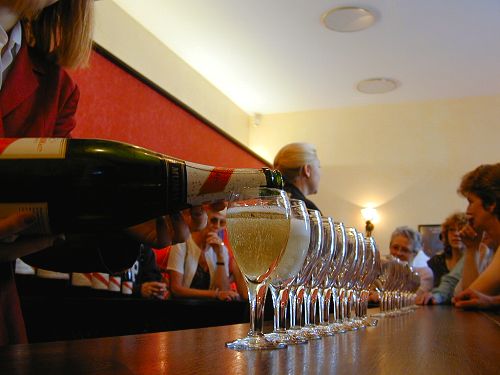 Cheers CheersAfter touring Chablis and Burgundy on our last trip and then visiting Bordeaux on this trip, the only major wine area in France we had yet see was Champagne. I like sparkling wine now and then but I have a hard time paying over $50 a bottle for the stuff. But there must be something special that justifies the price and the devotion many have for it. To find out we headed north from Paris to Reims - the center of the Champagne area. Here we toured two major Champagne houses; Mumm and Veuve Clicquot. The process for making Champagne is pretty much the same as making wine except you do a secondary fermentation in the bottle and use a technique called 'riddling' to remove the sediment. After an exhaustive tour of the cold cellars, it was nice to come back up into the sunshine and enjoy a flute of the finished product. It was amusing to watch everyone take their samples and clink glasses with their neighbors. I guess Champagne and toasts are inseparably linked. -- Scott |
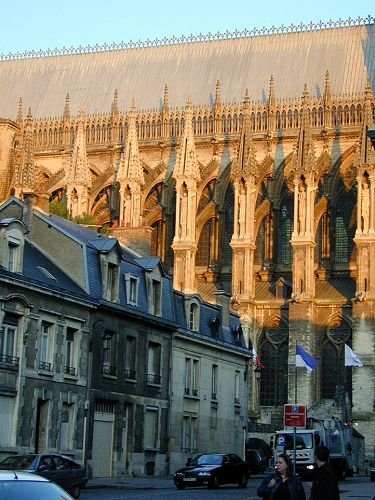 Reims Cathedral Reims CathedralIn addition to the famous wine, Reims also has an extraordinary Gothic cathedral that rises up within the town like a fantastic castle. Considered to be one of the finest examples of the gothic style, the current structure dates from the 13th century but there has been a church on this site since AD 300. Inside, the floors are cobbled with the tombstones of the rich and famous. Through the centuries, the shuffling of countless feet has ground the stones almost smooth of writing. It's certainly an inspiring place to sit, surrounded by so many long forgotten ghosts. -- Scott |
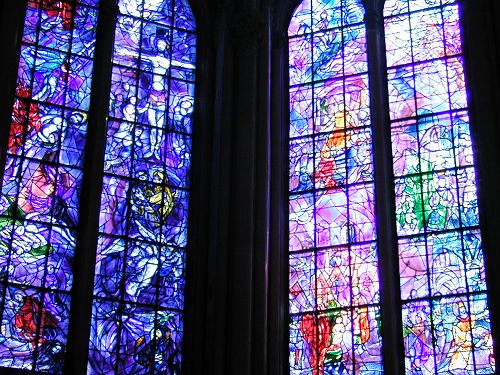 Chagall Window in Reims Cathedral Chagall Window in Reims CathedralI'm one of those silly people whose opinion of an artist's work can be enhanced (or lessened) by the knowledge of what they are/were like as a person. I admire Chagall's dreamy, warm images that much more because I once read that he was a devoted husband who adored his wife, with whom he flies across many of his canvases in a loving embrace. This is Chagall's contribution to the Reims cathedral, considered one France's finest examples of Gothic architecture. Bombed to a shell in World War I, many of the stained glass windows were replaced with clear glass. However, a few of the windows were commissioned to artists. Hopefully, this image helps you understand why I like it so much. -- Karen |
Next Up: Belgium and the Netherlands
Copyright 2001
Scott & Karen Semyan